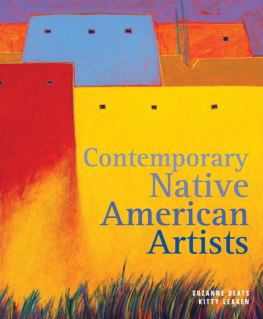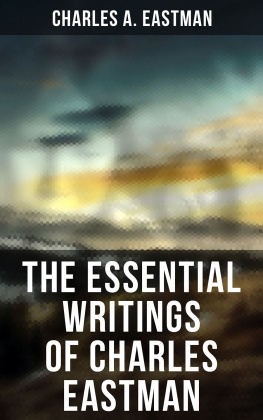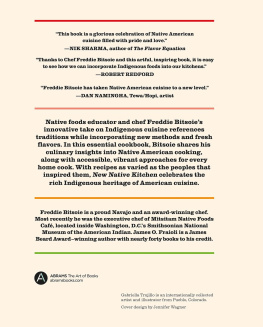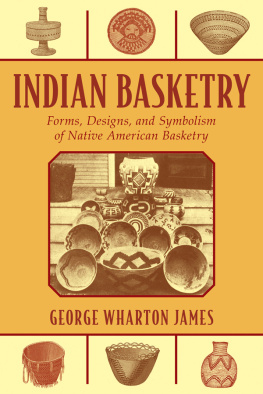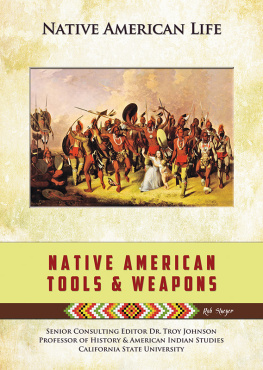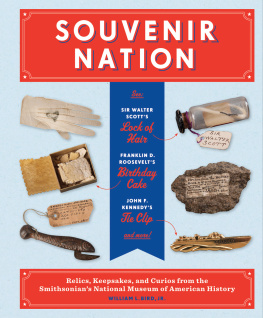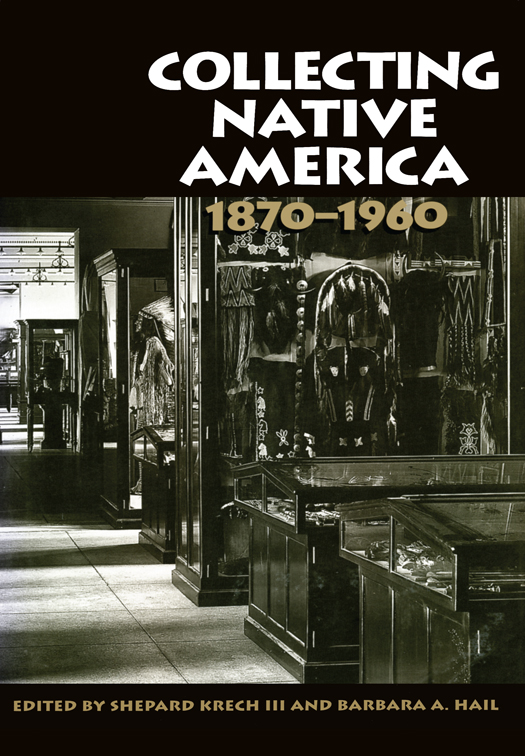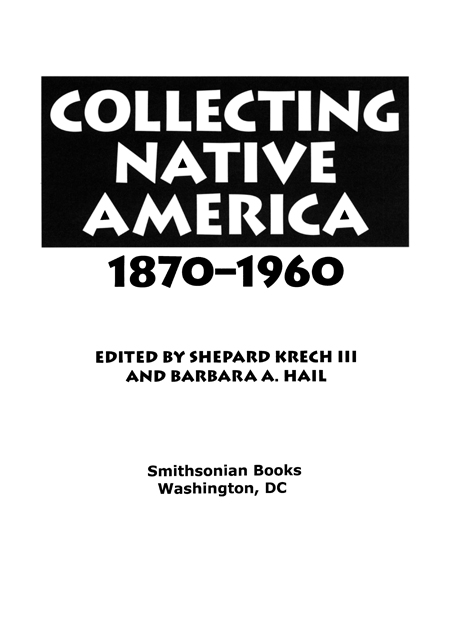1999 by the Smithsonian Institution
All rights reserved
Copy editor: Jan McInroy
Production editor: Robert A. Poarch
Designer: Janice Wheeler
Library of Congress Cataloging-in-Publication Data
Collecting native America, 18701960 / edited by Shepard Krech III and
Barbara A. Hail.
p. cm.
Includes bibliographical references.
ISBN 1-56098-815-0 (alk. paper)
eBook ISBN: 978-1-58834-414-4
1. Indians of North AmericaMuseumsHistory. 2. Indians of North AmericaMaterial cultureCollectors and collecting. 3. Indian artNorth AmericaCollectors and collecting. I. Krech, Shepard, 1944- . II. Hail, Barbara A.
E76.85.C65 1999
970.004970075dc21
99-39620
British Library Cataloguing-in-Publication Data available
For permission to reproduce illustrations appearing in this book, please correspond directly with the owners of the works, as listed in the individual captions. Smithsonian Books does not retain reproduction rights for these illustrations individually, or maintain a file of addresses for photo sources.
v3.1
CONTENTS
FOREWORD
William C. Sturtevant
INTRODUCTION
Shepard Krech III
1
ZEST OR ZEAL? SHELDON JACKSON AND THE COMMODIFICATION OF ALASKA NATIVE ART
Molly Lee
2
RONONSHONNITHE BUILDER: DAVID ROSS McCORDS ETHNOGRAPHIC COLLECTION
Moira T. McCaffrey
3
CHARLES FLETCHER LUMMIS AND THE ORIGINS OF THE SOUTHWEST MUSEUM
Thomas H. Wilson and Cheri Falkenstien-Doyle
4
RUDOLF F. HAFFENREFFER AND THE KING PHILIP MUSEUM
Shepard Krech III
5
PATRONS, POTTERS, AND PAINTERS: PHOEBE HEARSTS COLLECTIONS FROM THE AMERICAN SOUTHWEST
Ira Jacknis
6
MUSEUMS AS INSPIRATION: CLARA ENDICOTT SEARS AND THE FRUITLANDS MUSEUMS
Barbara A. Hail
7
COLLECTING TO EDUCATE: ERNEST THOMPSON SETON AND MARY CABOT WHEELWRIGHT
Nancy J. Parezo and Karl A. Hoerig
8
EVERY LAST DISHCLOTH: THE PRODIGIOUS COLLECTING OF GEORGE GUSTAV HEYE
Clara Sue Kidwell
9
GRAND AMATEUR COLLECTING IN THE MID-TWENTIETH CENTURY: THE MARY W. A. AND FRANCIS V. CRANE AMERICAN INDIAN COLLECTION
Joyce Herold
WILLIAM C. STURTEVANT
FOREWORD
Publications on museum history have often stressed the early history of European museums, of cabinets of curiosity. This volume examines an important aspect of museum history that has been largely unstudied: the roles of private collectors in the foundation of North American public museums of American Indian materials, from about 1870 to 1960.
Most of the major North American museums of natural history were founded ten or twenty years earlier than 1870. Their anthropological collections (emphasizing North American materials) gradually differentiated from their collections of natural history. As anthropology became established as a recognized scholarly discipline, at first in museums and a little later in universities, these museum departments entered a period of very energetic and systematic collecting of American Indian materials, an activity that lasted some forty years, until the 1920s. The purposes of these collections and the accompanying exhibitions were (and still are) mixed: scientific, historical, educational, entertaining, monumental or commemorative.
Most of the collectors discussed here seem to have viewed their activities as the accumulation and preservation of a material record of the romantic past of the Indian peoples they believed to be vanishing. Indian people and their cultures of course have not vanished, but they have changed, and the mostly traditional sorts of artifacts and works of art that are now in museums are indeed an important record of the past of the cultures and arts of North American Indian peoples.
A remarkable array of individuals is surveyed in these essays, people with different motives, from different backgrounds, showing interests in different sorts of materials. This is a story about (usually) wealthy individual collectors, amateurs (in the classical sense of that word), most of whom altruistically arranged for their private collections to become public museums.
Hardly any museums of this type have arisen recently. Auction house catalogs of the last twenty-five years or so show that similar collections are now usually dispersed via the art and antiquities market rather than preserved in public museums, in part probably because of the steep rise in monetary value of these materials, which can be seen as one consequence of the collecting activities described here. Another factor must be the need for a large endowment to support any public museum.
The history of these collections is part of the history of anthropology, and of the history of art collecting and art appreciation (because Native American materials are now widely recognized as real or high art). The period is largely a world of the past, which we need to understand in order to appreciate and use effectively the legacy that these collectors have left us, whether we be anthropologists, Native people, art historians, or other museum visitors and museum users.
The kind of information presented in the essays in this volume is needed before proper use can be made of the now public collections that resulted from the obsessions of their founders. We need to know the contexts for the accumulatingthe aims and purposes of the collectors, and especially how the objects were acquired. How close to the original makers and users were the donors or sellers of the objects? How well documented is the history of each object before it was acquired by the founding collector? Put another way, the usefulness of each object is heavily dependent on what we can know of its various past contexts, of its taphonomy.
Rather surprisingly, information of this kind is not easy to find in the catalog and accession records available in most museums. Even in the case of museum collections made by professional anthropologists, the field catalogs are rarely as detailed as we would like, and even more rarely are they adequately copied into the museums working catalogs. In order to fill out the usual museum records, one must turn to printed, manuscript, and oral sources on the collectors and their collectionsexactly the kind of evidence cited and analyzed by the authors of the following essays.
These studies provide a model for examining the history of other museums, both smaller ones that are similar to those treated here and the large, long-public museums with collections of art and artifacts originating in American Indian, First Nations, and other non-Western societies.
SHEPARD KRECH III
INTRODUCTION
Over the last fifteen years, many scholars have mined the intersection of collecting, museums, and the artifacts of indigenous people. They have explored the processes through which the original owners gave up, willingly and legally or not, their possession of artifacts, which subsequently flowed into the West, in many cases eventually to reside in large repositories. Exposing and postulating a range of unstated assumptions that underlie museums and exhibitions, they have plumbed imperialist histories, colonialism, subversive market relations, inequities of power, the violence of collecting, and the more recent return of patrimony and control over interpretation. The themes resonate in our postmodern and postcolonial time, when the public is widely aware of the illegal traffic in antiquities and the looting of archaeological sites as both historical issues and urgent contemporary problems the world over. They fit an era in which nations, tribes, and individuals are demanding restitution of property confiscated in war or during punitive expeditions or stolen from its original site. And they suit a day when museums in the United States are under federal mandate to determine, with American Indians, the legal basis of their Native North American collections and to returnto repatriatefunerary, sacred, and patrimonial objects, as well as human remains, to the new owners under law.


